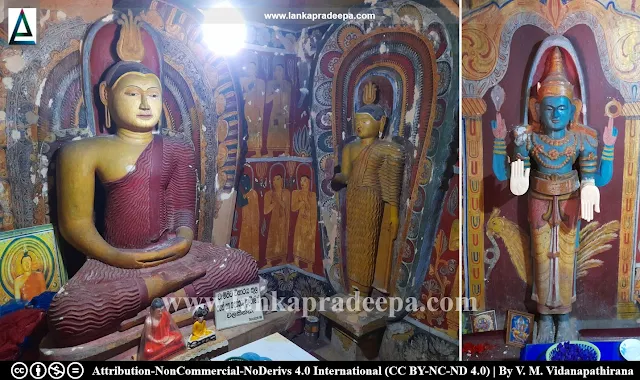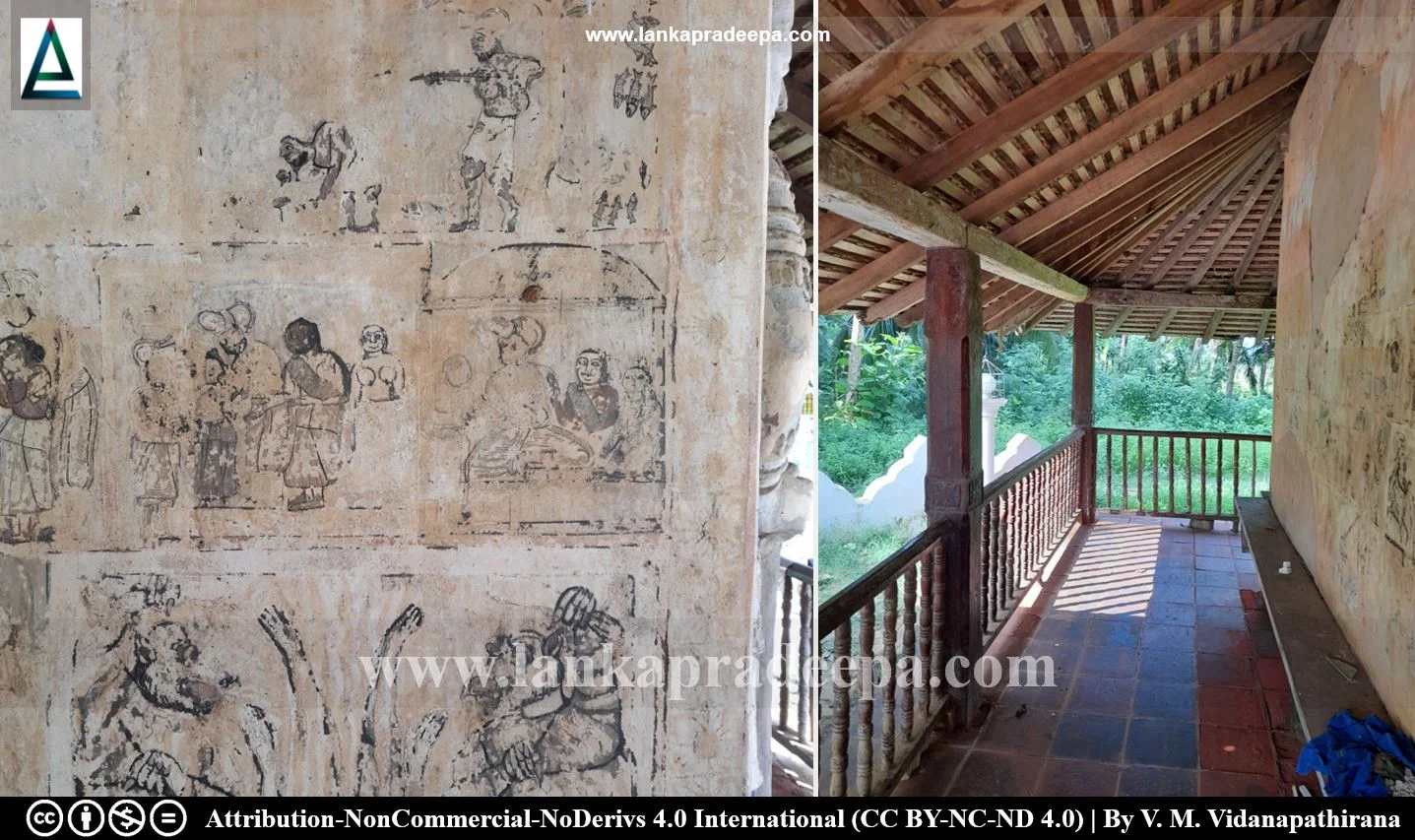
Hathagala Raja Maha Viharaya (Sinhala: හාතාගල රජ මහා විහාරය) is a Buddhist temple situated in Hathagala village in Hambantota District, Sri Lanka.
History
There is a Sannasa (a document of grant) which states that this temple was presented to a Buddhist monk named Wagegoda Indasara by King Kirti Sri Rajasinha [(1747-1781 A.D.) Abeyawardana, 2004; Silva & Chandrasekara, 2021]. Another document dated in 1795 states that the Tempita Viharaya of this temple was constructed during the reign of King Rajadhi Rajasinha [(1781-1798 A.D.) Silva & Chandrasekara, 2021].
Tempita Viharaya
Tempita Viharas were popular in many Buddhist temples during the Kandyan Period. These structures were usually built on a wooden platform resting on bare stone pillars or stumps which are about 1-4 feet tall. The roof is generally made of timber and held by wooden stumps. The walls are usually made of wattle and daub and form the main enclosed shrine room containing Buddhist sculptures and murals in the Kandyan style. Some Tempita Viharas have narrow verandas and ambulatories circulating the main enclosed space. The construction of these buildings started in the 17th century and lasted until the end of the 19th century (Wijayawardhana, 2010).
Hathagala Tempita Viharaya

The Tempita Viharaya is the main monument of this temple with archaeological value. It has only one shrine room built on 8 short pillars 2 ft. in height and it has been surrounded by a narrow ambulatory placed on the ground level (Silva & Chandrasekara, 2021). The outer and inner walls of this shrine room are decorated with paintings of the Kandyan style. A seated Buddha statue accompanied by two figures of Sariputta (left) and Moggallana (right), the two chief disciples of Gautama Buddha, are found inside the image house. Two standing Buddha statues are also found facing each other at both left and right walls along with two statues of God Kataragama and God Vishnu (Silva & Chandrasekara, 2021).


.
References
1) Abeyawardana, H.A.P., 2004. Heritage of Ruhuna: Major natural, cultural and historic sites. Colombo: The Central Bank of Sri Lanka. ISBN: 955-575-073-4. pp.150-151.
2) Silva, K.D. and Chandrasekara, D.P., 2021. The Tämpiṭavihāras of Sri Lanka: Elevated Image-Houses in Buddhist Architecture. Anthem Press. pp.158-159.
3) Wijayawardhana, K., 2010. Sri Lankawe Tampita Vihara (In Sinhala). Dayawansa Jayakody & Company. Colombo. ISBN: 978-955-551-752-2. p.12.
Location Map
This page was last updated on 26 November 2023

